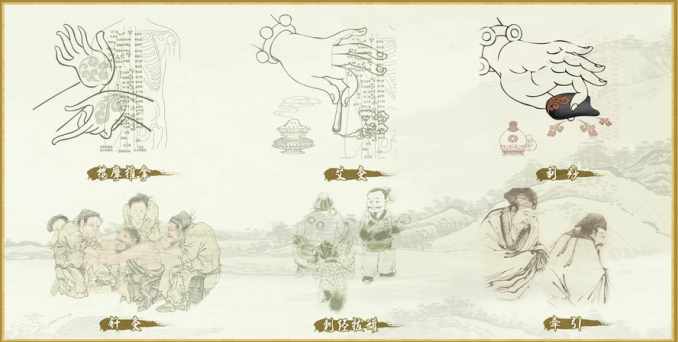Differentiation of Yin Syndrome and Yang Syndrome
The differentiation of syndromes based upon yin-yang theory is a guiding principle for syndrome differentiation. For the purpose to make a correct syndrome differentiation of the surgical diseases, it is necessary to differentiate their yin and yang attributions. For differentiation of yin and yang, it is necessary to pay attention to the following essential points
1. Onset of Diseases
Acute onset belongs to yang and chronic onset belongs to yin.
2. Depth of Diseases
The diseases that occur in the superficial skin and muscle belong to yang and the diseases that occur in the tendon and bone belong to yin.
3. Change of Skin Color
Red skin color in the pathological position belongs to yang and purple dark, pale color or no change in skin color belongs to yin.
4. Change of Skin Temperature
The burning sensation in the sick area belongs to yang and cool, cold or slight heat sensation belongs to yin.
5. Height of Tumefaction
The high tumefaction belongs to yang and the fiat or depressed tumefaction belongs to yin.

6. Scope of Tumefaction
Localized tumefaction with shrunken base belongs to yang and the diffuse tumefaction with scattering base belongs to yin.
7. Hardness of Tumefaction
The tumefaction in medium hardness and disappearing after ulceration belongs to yang and the tumefaction as soft as cotton and as hard as a rock belongs to yin.
8. Severity of Pain
Serious pain belongs to yang, and no pain, insidious pain, aching pain or spasmodic pain belongs to yin.
9. Change of Pus
Thick pus in yellow color after ulceration belongs to yang and thin pus in dark color or mixed with blood belongs to yin.
10. Duration of Illness
The short duration mostly belongs to yang syndrome and the long duration mostly belongs to yin one.
11. General Condition
At the onset of yang syndromes, there are the symptoms of fever, aversion to cold, dry mouth, thirst, scanty urine, constipation, red tongue, yellowish coating, and rapid pulse, etc. At the onset of yin syndromes, there are no symptoms, and in the period of suppuration, there can be low fever, slightly dry mouth, scanty urine, slightly red tongue, scanty thin coating, and thready and rapid pulse. Mter ulceration, there are low spirit, lassitude, pale complexion, poor appetite, spontaneous sweating, and night sweating.
Syndrome differentiation based upon yin-yang theory is supposed to summarize and classify the commonly encountered symptoms and signs by analogy. But, human being is an organic entirety and different diseases can present different features of syndromes. Therefore, the syndrome differentiation cannot be limited in one aspect and should be conducted with comprehensive analysis in combination of different diseases. Only by this essential point can it be possible to identify yin and yang.
Besides, although there is certain yin and yang attribution in diseases, transformation between yin syndromes and yang syndromes can take place under certain conditions. More-over, there is no pure yin and no pure yang. It is also necessary to understand that there is yang within yin and yin within yang and to differentiate the condition of yin and yang.







